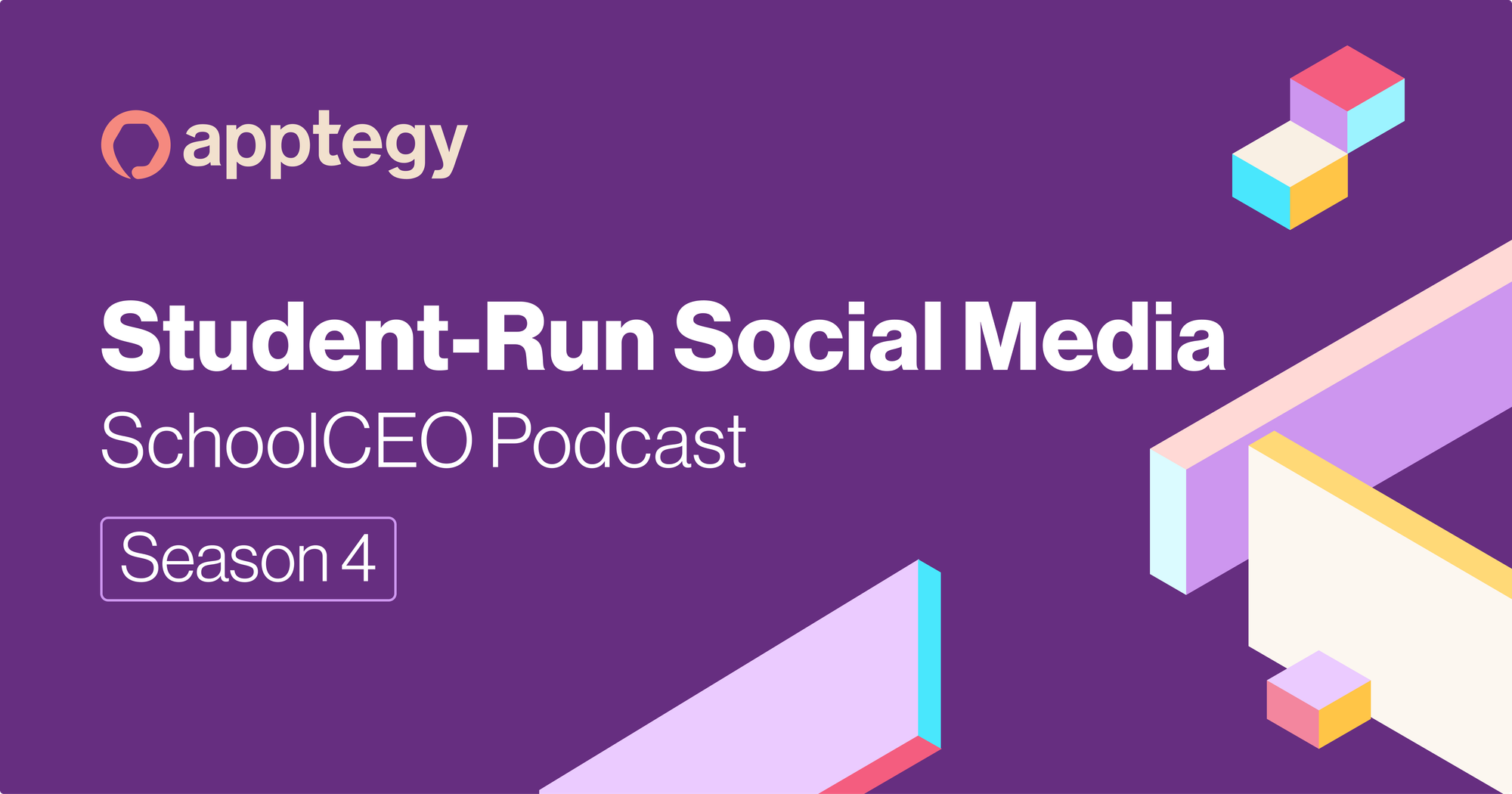Student-Run Social Media
Today we discuss letting students contribute to schools’ social media.

Show Notes:
Read From Scholars to Storytellers to learn more about Arcadia Unified’s communications internship program.
To sign up for the National Communications Internship Collab, click here.
For more school marketing strategies and insights, check out our free webinars at https://info.apptegy.com/events-and-resources.
Subscribe to our newsletter at https://www.schoolceo.com/subscribe-now/.
Visit us at schoolceo.com and connect with SchoolCEO on LinkedIn or X/Twitter @school_ceo. If you have a story you’d like to share with the SchoolCEO team, email us at eileen@schoolceo.com or schedule a call.
SchoolCEO is powered by Apptegy, the maker of the leading K-12 communications and brand management platform.
Episode Transcript
Welcome to SchoolCEO Podcast. I’m your host, Eileen Beard. Today I want to discuss another way to loop students into your marketing and communications work. Not only can they help a small team carry a heavy work load, they can tell your story like no one else can. And the closer administrators and communicators work with students, the better they can see school through their students’ eyes, which means being able to represent them and support them better.
At Arcadia Unified School District in CA, students are learning to be social media managers, magazine editors, videographers and more—all while increasing the reach of their district’s two-person communications team.
Each year, around 25 high school students take part in Arcadia Unified’s Digital Communications Internship (DCI). After applying, interviewing and working through a 30-day probation period, they become a crucial part of the district’s content creation machine. DCI students take photos and video at district events, edit their footage into short videos and most surprisingly, run Arcadia Unified’s social media accounts themselves.
DCI multiplies Arcadia’s 2 person comms team’s capacity by ten. In past years, the public information office, with the interns’ help, has been able to cover more than 200 events in just 184 school days.
Not only do they help with social media, in the 2022-23 school year, the district launched its award-winning Imagine Magazine, chock-full of student-produced stories and photos. It was a great chance to let students express themselves, start to build portfolios and most importantly, it served as a powerful connection between the schools and the community. At 50 pages, it was an impressive feat—one that wouldn’t be possible without their communications interns.
If the idea of letting students run your social media accounts scares you, you’re not alone. The district’s Chief Communications Officer Ryan Foran told us that once you work with the students—teach them and train them and trust them—it’s not an issue. They’ve been allowing students to post for five or six years now, and he said they’ve never had a single problem.
If you’re interested in inviting students to help run your district social media account:
- Look to other districts for inspiration. Foran is actually involved in a national communications internship cohort. They meet to discuss ideas and best practices. I’ve included a link to sign up for it in the show notes.
- Take it incrementally. Arcadia’s internship mandates a 30-day probation period for students, during which time the district can teach them and ascertain how much they can trust them. Once interns have been with you for a while and shown they are capable, you can let them start contributing to social media. And you don’t have to let them totally run it right away, or ever. It’s up to you.
- If you’re still not sure about giving students access to your socials, maybe you should set up a system that lets you moderate their posts. If you’ll remember, in the collective authorship episode I mentioned that Saginaw ISD uses this method to moderate posts by staff—and it would be just as useful with students. If your district has an app that lets students post to social media from a central location, and it also lets administrators review posts before they’re published to social media platforms, then you can easily censor them. And as I said before, proofreading posts still takes a lot less time than collecting and creating content does. But ultimately the goal should be to step back as much as possible so you can focus on some of your other work and students can feel more independence. After all, training students to be responsible citizens is one of the most important things schools do.
Thanks for joining me.

